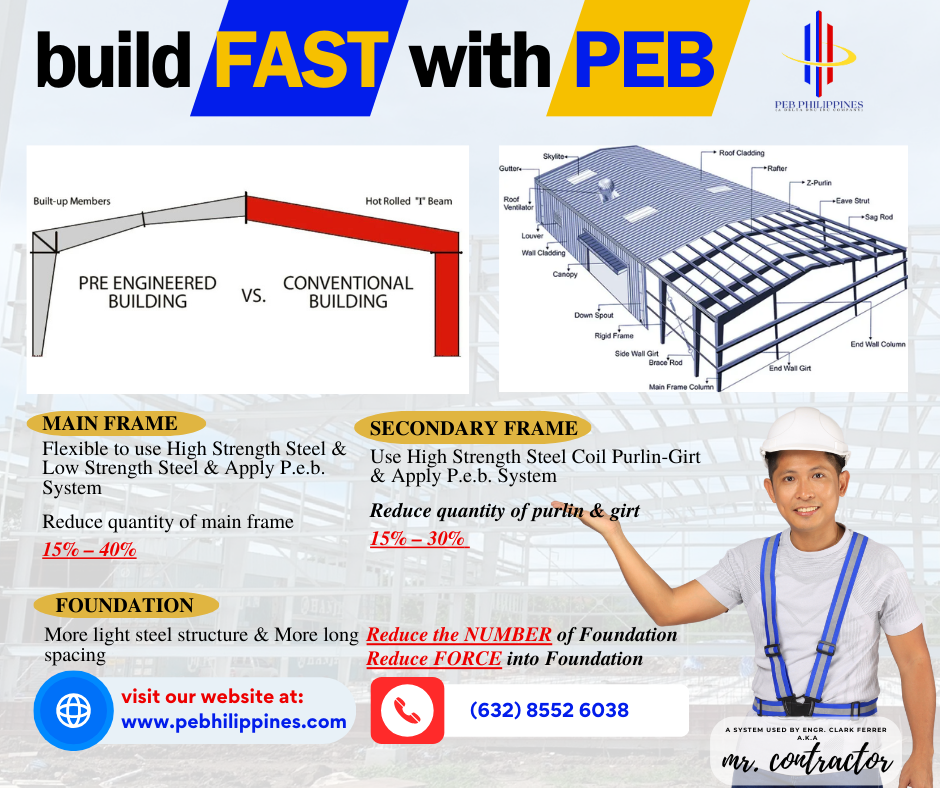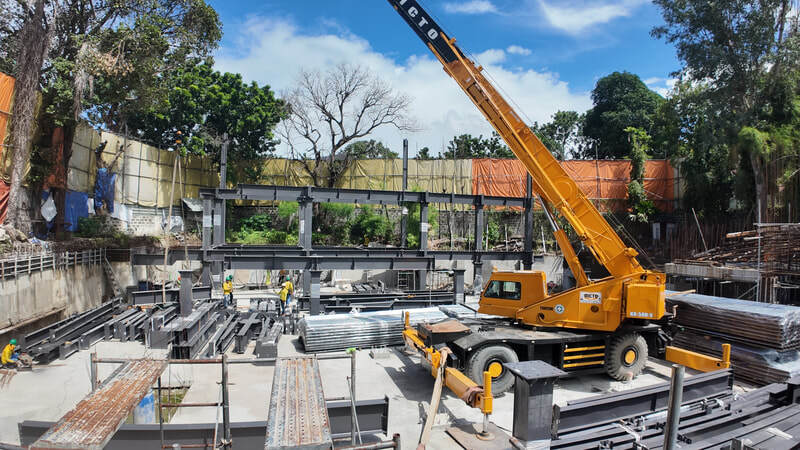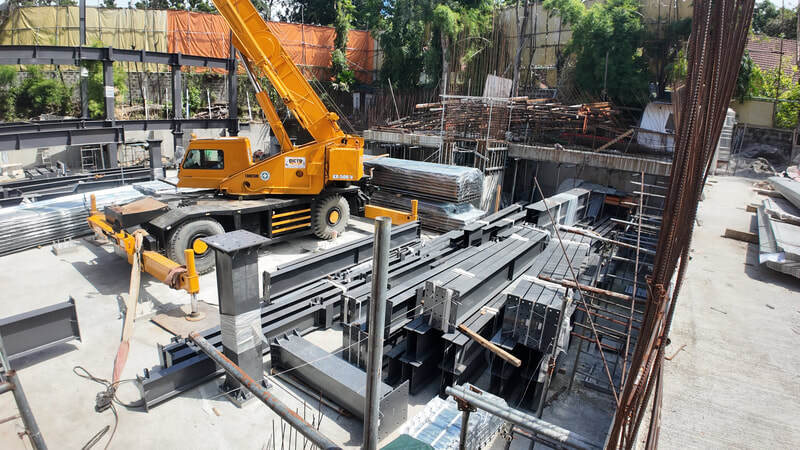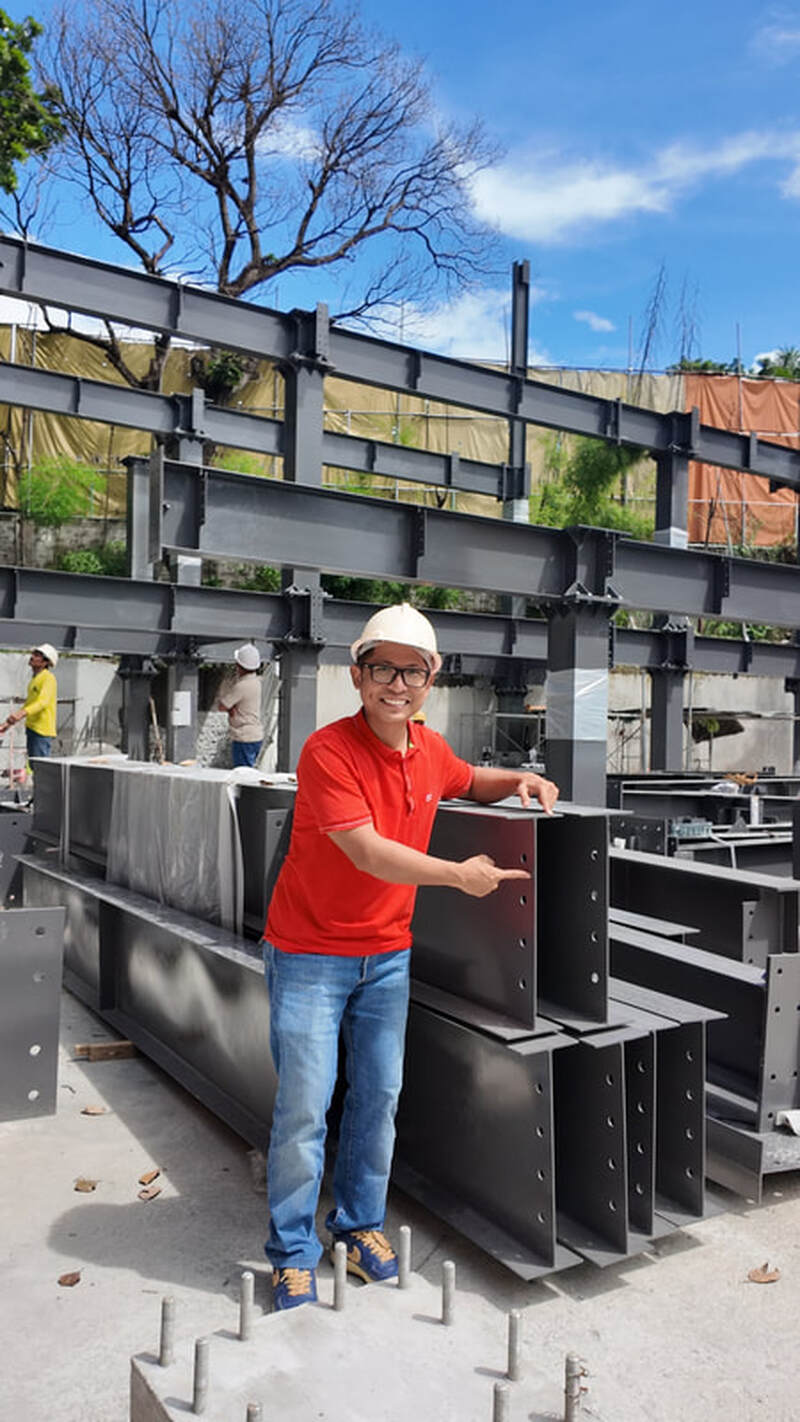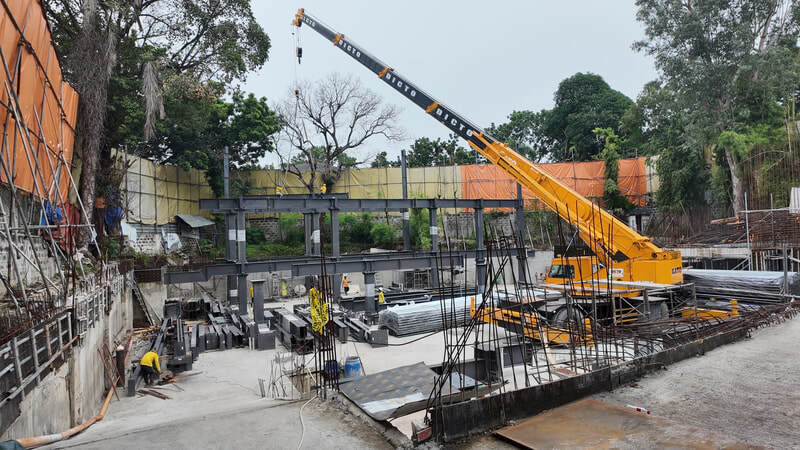No posts found.
Author
Engr. Clark Ferrer is an advocate of the construction industry, promoting ethical practices and innovative construction materials.
Innovating Filipino Construction with Pre-Engineered Buildings (PEB): Faster, Quality, and Cost-Efficient Solutions for Builders
The construction industry in the Philippines has seen significant growth in recent years, with an increasing demand for faster project delivery, high-quality structures, and cost efficiency. To meet these demands, Filipino builders are now turning to innovative construction techniques like Pre-Engineered Buildings (PEB). This method offers a solution that aligns with modern building requirements and provides builders with competitive advantages, particularly in terms of speed, quality, and overall cost-effectiveness.
What are Pre-Engineered Buildings (PEB)?
PEBs are buildings that are designed and fabricated in a factory environment and then assembled on-site. They consist of a steel framework that supports walls, roofs, and floors, with components pre-cut, pre-drilled, and ready for assembly. The process involves advanced engineering, resulting in faster construction times without compromising quality.
These structures are primarily used in commercial, industrial, and residential projects, offering flexibility in design and functionality. PEB is suitable for warehouses, factories, office buildings, schools, and even residential developments.
How PEB Helps Filipino Builders Innovate
1. Speed and Efficiency
One of the most significant advantages of PEB is its ability to drastically reduce construction time. Traditional building methods can take months or even years, depending on the project's complexity. However, PEB systems are designed to streamline construction, allowing builders to complete projects up to 30% faster.
Filipino builders can save time during the design and approval process, as PEBs often come with standardized designs that adhere to local building codes. Once the design is approved, the fabrication of materials occurs simultaneously in a controlled environment. This parallel process minimizes delays due to weather conditions or supply shortages, making PEBs an ideal solution in regions where weather can impact project timelines.
2. Cost Efficiency
PEBs can be a game-changer when it comes to controlling construction costs. Since the components are manufactured off-site, builders can save on labor costs and site preparation. The reduced construction time means fewer labor hours, leading to significant savings.
Additionally, material waste is minimized, as components are precisely manufactured to fit the building's design. This efficiency reduces excess costs associated with traditional on-site cutting and modification, ultimately lowering overall project expenses.
For Filipino builders, these savings can be passed on to clients, making PEBs a more attractive option for cost-conscious developers and property owners.
3. Quality and Durability
PEBs are known for their high-quality construction due to the precision of their manufacturing process. Steel, the primary material used in PEBs, is highly durable, resistant to termites, and capable of withstanding extreme weather conditions, such as typhoons, which are common in the Philippines.
The factory-controlled environment ensures that each component is fabricated with strict quality control, reducing the likelihood of structural defects that can occur with on-site construction. Furthermore, PEBs can be designed to meet specific seismic and wind load requirements, ensuring safety and longevity in various geographic locations across the country.
4. Design Flexibility
While some may assume that PEBs are limited in design, modern technology has allowed for a high degree of customization. Filipino builders can tailor the design of PEBs to meet the aesthetic and functional needs of their clients. The flexibility in design extends to the building’s layout, façade, roof structure, and even the integration of sustainable features such as solar panels and rainwater harvesting systems.
PEBs offer a versatile solution for both low-rise and high-rise projects, making them suitable for a wide range of construction applications in the Philippines, from commercial centers and warehouses to residential homes.
5. Sustainability and Eco-Friendliness
With the global focus on sustainable building practices, PEBs provide an eco-friendly alternative to traditional construction. Steel is one of the most recyclable materials in the world, and the efficient use of materials in PEBs contributes to lower carbon emissions during the construction process. Additionally, the energy efficiency of PEBs, combined with the use of insulating materials, reduces the operational costs of buildings.
By adopting PEB technology, Filipino builders can contribute to the growing demand for green building solutions, aligning with sustainable development goals (SDGs) and addressing the environmental challenges the country faces.
Empowering Filipino Builders to Compete GloballyIn the competitive landscape of construction, Filipino builders must continuously innovate to remain relevant and competitive. PEB technology empowers builders to offer faster, high-quality, and cost-efficient solutions, attracting more clients and providing the capability to take on larger and more complex projects.
Moreover, PEB's flexibility and sustainability make it an excellent option for builders who want to future-proof their operations by aligning with global construction trends. With the potential to reduce construction time, lower costs, and deliver superior quality, PEB technology allows Filipino builders to elevate their game and compete on both the local and international stages.
The construction industry in the Philippines has seen significant growth in recent years, with an increasing demand for faster project delivery, high-quality structures, and cost efficiency. To meet these demands, Filipino builders are now turning to innovative construction techniques like Pre-Engineered Buildings (PEB). This method offers a solution that aligns with modern building requirements and provides builders with competitive advantages, particularly in terms of speed, quality, and overall cost-effectiveness.
What are Pre-Engineered Buildings (PEB)?
PEBs are buildings that are designed and fabricated in a factory environment and then assembled on-site. They consist of a steel framework that supports walls, roofs, and floors, with components pre-cut, pre-drilled, and ready for assembly. The process involves advanced engineering, resulting in faster construction times without compromising quality.
These structures are primarily used in commercial, industrial, and residential projects, offering flexibility in design and functionality. PEB is suitable for warehouses, factories, office buildings, schools, and even residential developments.
How PEB Helps Filipino Builders Innovate
1. Speed and Efficiency
One of the most significant advantages of PEB is its ability to drastically reduce construction time. Traditional building methods can take months or even years, depending on the project's complexity. However, PEB systems are designed to streamline construction, allowing builders to complete projects up to 30% faster.
Filipino builders can save time during the design and approval process, as PEBs often come with standardized designs that adhere to local building codes. Once the design is approved, the fabrication of materials occurs simultaneously in a controlled environment. This parallel process minimizes delays due to weather conditions or supply shortages, making PEBs an ideal solution in regions where weather can impact project timelines.
2. Cost Efficiency
PEBs can be a game-changer when it comes to controlling construction costs. Since the components are manufactured off-site, builders can save on labor costs and site preparation. The reduced construction time means fewer labor hours, leading to significant savings.
Additionally, material waste is minimized, as components are precisely manufactured to fit the building's design. This efficiency reduces excess costs associated with traditional on-site cutting and modification, ultimately lowering overall project expenses.
For Filipino builders, these savings can be passed on to clients, making PEBs a more attractive option for cost-conscious developers and property owners.
3. Quality and Durability
PEBs are known for their high-quality construction due to the precision of their manufacturing process. Steel, the primary material used in PEBs, is highly durable, resistant to termites, and capable of withstanding extreme weather conditions, such as typhoons, which are common in the Philippines.
The factory-controlled environment ensures that each component is fabricated with strict quality control, reducing the likelihood of structural defects that can occur with on-site construction. Furthermore, PEBs can be designed to meet specific seismic and wind load requirements, ensuring safety and longevity in various geographic locations across the country.
4. Design Flexibility
While some may assume that PEBs are limited in design, modern technology has allowed for a high degree of customization. Filipino builders can tailor the design of PEBs to meet the aesthetic and functional needs of their clients. The flexibility in design extends to the building’s layout, façade, roof structure, and even the integration of sustainable features such as solar panels and rainwater harvesting systems.
PEBs offer a versatile solution for both low-rise and high-rise projects, making them suitable for a wide range of construction applications in the Philippines, from commercial centers and warehouses to residential homes.
5. Sustainability and Eco-Friendliness
With the global focus on sustainable building practices, PEBs provide an eco-friendly alternative to traditional construction. Steel is one of the most recyclable materials in the world, and the efficient use of materials in PEBs contributes to lower carbon emissions during the construction process. Additionally, the energy efficiency of PEBs, combined with the use of insulating materials, reduces the operational costs of buildings.
By adopting PEB technology, Filipino builders can contribute to the growing demand for green building solutions, aligning with sustainable development goals (SDGs) and addressing the environmental challenges the country faces.
Empowering Filipino Builders to Compete GloballyIn the competitive landscape of construction, Filipino builders must continuously innovate to remain relevant and competitive. PEB technology empowers builders to offer faster, high-quality, and cost-efficient solutions, attracting more clients and providing the capability to take on larger and more complex projects.
Moreover, PEB's flexibility and sustainability make it an excellent option for builders who want to future-proof their operations by aligning with global construction trends. With the potential to reduce construction time, lower costs, and deliver superior quality, PEB technology allows Filipino builders to elevate their game and compete on both the local and international stages.
